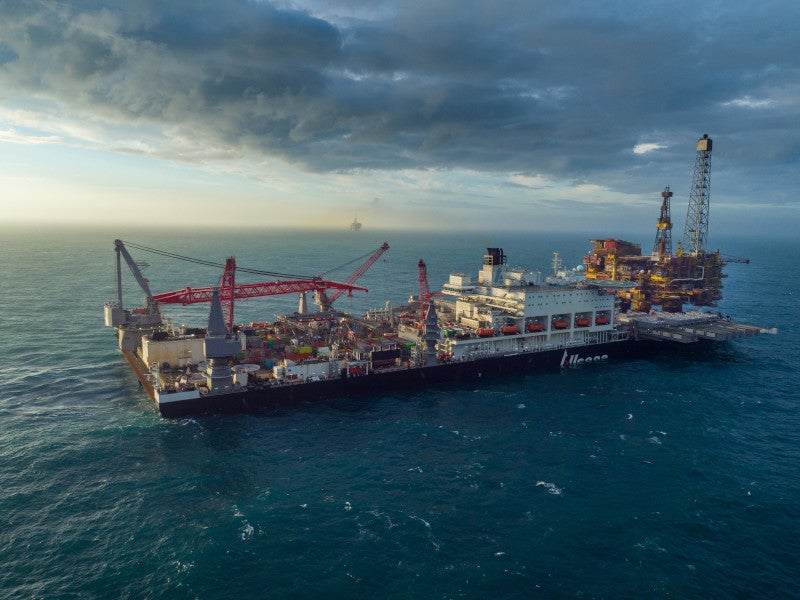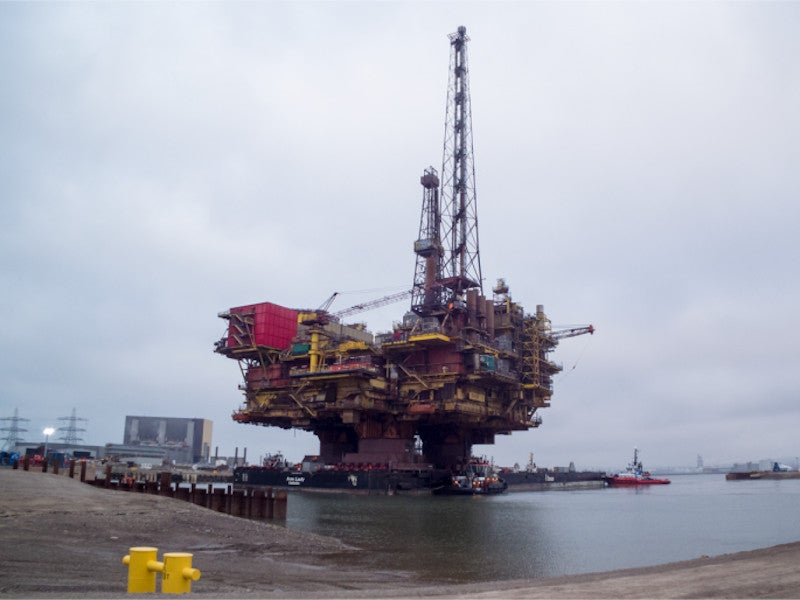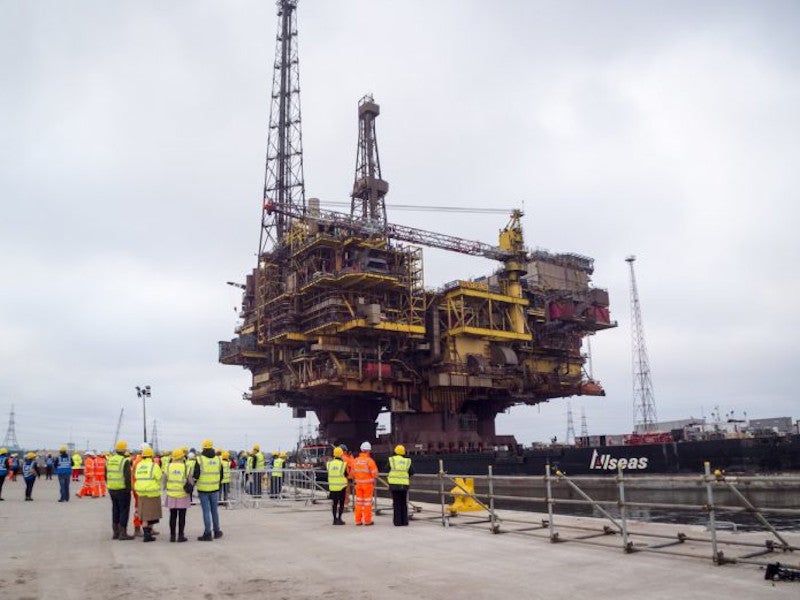The Brent field was one of the biggest fields in the UK North Sea which is currently being decommissioned due to depletion of recoverable oil and gas reserves.
Operated by Royal Dutch Shell, the field was discovered in 1971 and brought into production in 1976. Shell and Esso Exploration and Production UK hold a 50% stake each in the field.
The field’s peak production capacity reached 504,000 barrels of oil per day (bopd) in 1982 and it produced a total of approximately three billion barrels of oil equivalent as of 2008.
The Brent field was converted into a predominantly gas field following a £1.2bn long-term field development (LTFD) project in the mid-1990s. The Brent field decommissioning project was initiated in 2006.
Location
The Brent field is located approximately 186km northeast of Lerwick in Shetland Islands, Scotland, UK. The field is situated in 140m-deep waters on the UK Continental Shelf in the northern North Sea.
Brent field production infrastructure
The Brent field comprised four large platforms namely, Alpha, Delta, Charlie, and Bravo. The Alpha’s topside was supported by a steel jacket while the topsides of Delta, Charlie, and Bravo sit on a separate three-legged gravity-based structure (GBS).
Brent Bravo was the first platform to go on stream in 1976. Brent Alpha and Brent Delta were installed in 1976 followed by the installation of Brent Charlie in 1978.
The field consisted of 146 wells and side-tracks, 30 pipelines covering approximately 103km, and four subsea structures.
Brent Delta is the first platform to cease production in December 2011, while the Brent Alpha and Bravo platforms stopped production in November 2014. Brent Charlie will be the last platform to be decommissioned in the field.
Brent field decommissioning details
The Brent field decommissioning activities include unplugging 146 wells spread across the field, the removal and recycling of the topsides of the four platforms, as well as the upper portion of the Alpha platform’s steel jacket. The removed structures were planned to be transported to Hartlepool in northeast England for recycling.
As per the decommissioning plan, the gravity-based structures (GBS) of Delta, Charlie, and Bravo platforms, the jacket footings of Alpha platform, drill cuttings, and the GBS cell contents will not be removed from the field. The GBS subsea storage cells were used to temporarily store crude oil before pumping to tankers or pipeline.
The Brent field is being decommissioned in a phased manner. The Brent Delta topside decommissioning programme was approved by the UK government in July 2015, while that for the Alpha, Bravo, and the Charlie platforms were approved in August 2018. The topsides of the Brent Delta platform, weighing approximately 24,200t, was removed in a single-lift in April 2017 and transported to Hartlepool for recycling. The topside was completely dismantled by February 2019.
The topsides of the Brent Bravo platform, weighing approximately 25,000t, was removed in a single-lift in June 2019. The topside is currently being dismantled and recycled.
The Brent pipelines decommissioning programme was approved by the UK government in March 2020.
Contractors involved
Allseas Group was contracted by Shell for the removal, transportation, and load-in to the shore of the topsides of three Brent field platforms and the steel jacket of the Brent Alpha platform in August 2013. The contract has an option to include the removal of topsides of the fourth platform as well.
Able UK was contracted for the disposal of three platform topsides and a steel jacket in February 2014. The offshore structures are being decommissioned at a facility in the Able Seaton Port in Hartlepool, northeast England. In the decommissioning process, it is estimated that approximately 97% of the offshore structures by weight will be recycled or reused.
Pioneering Spirit
The topsides of Brent field’s Delta and Bravo platforms were removed by the Pioneering Spirit which is considered to be the world’s biggest construction vessel.
The 382m-long, 124m-wide Pioneering Spirit is a twin-hulled vessel which entered into operation in 2016. The Pioneering Spirit, formerly known as Pieter Schelte, can perform single-lift installation and removal of offshore platforms and lay subsea pipelines.
The topsides lift capacity of the construction ship is up to 48,000t and the jacket lift capacity is up to 20,000t in a single-lift.





